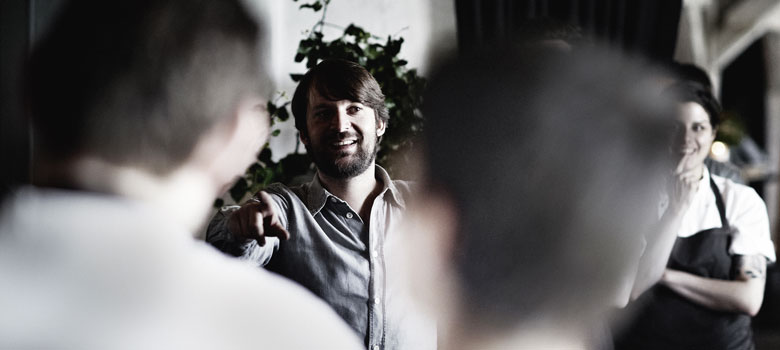
Food
Fermenting Ideas
In the food world, no chef garners the sort of devotion as that enjoyed by René Redzepi. Peers follow his every move, he’s the critics’ darling and, for diners, there’s a wait list that sometimes stretches to 2,000 for the 110 covers Noma offers each day.
Redzepi first opened Noma, on Copenhagen’s waterfront, in 2003. He was just 26 years old. Within two years, the restaurant made its first appearance on the World’s 50 Best Restaurants list at number 33; four years later it was on top, a position it has held three more times.
It’s quite an achievement for the son of a taxi driver, who emigrated to Denmark from Macedonia, and a Danish cleaner. But the roots of his style come from there. His family lived in the country, where they prepared mainly vegetarian meals from locally sourced produce.
Blazing a trail
It is his deep connection with the land that has always defined Redzepi’s culinary style and drive.
“As a cook, it changes you. You become less wasteful, there is more respect,” he told Selector when he was in Australia for a special event with good friend and peer, Quay chef Peter Gilmore. “You view the ingredients differently. You are more in touch with the seasons, because you know what is going on.”
With this mindset, Redzepi was enamoured with the process of sourcing, preparing and cooking food. Even the pretentious regulations of cooking school could not stifle his culinary dreams.
“I remember vividly, one of my exam questions was naming soft boiled eggs in five languages,” he recalls. “That was considered one of the important things to know as a cook. You needed to be able to say it in French and Italian. It was bullshit.
“Spending time connecting to your landscape, knowing your seasonality, as an aspect of cooking, that is as important as technique. They should go hand in hand, but it is never taught.”
The roots of New Nordic
When Redzepi and Claus Meyer, the entrepreneur who backed Noma, and a group of like-minded chefs set out the terms for what they were going to serve at the restaurant, the term New Nordic cuisine did not exist. The team had three basic tenets: ethics, sustainability and quality. In real terms, it pushed the focus to local, seasonal produce. But there was still an element needed to take Noma to the next level.
The breakthrough came in the spring of 2004 when good friend, Swedish forager Roland Rittman, contacted Redzepi with a ‘handful of odd little flower buds’ – ramson berries, foraged by Rittman not too far from the restaurant.
“A whole new world opened up,” Redzepi wrote in his journal, A Work in Progress, detailing a year of his life at Noma during 2011.
“We found new types of nuts 10 minutes outside of Copenhagen. We found that trees can be an ingredient in themselves. Not only did this broaden our gastronomical vocabulary, also it provided identity, a truly personal and inspiring relationship to nature. From then on, it all started clicking.”
Redzepi set up the Nordic Food Lab – a test kitchen to look in depth at each and every ingredient in their area, testing to see how it could be cooked.
“We were beginning to understand how to cook without references to other cultures.” New Nordic cuisine was christened. Noma’s reputation sky-rocketed, as did Redzepi’s.
A new way
Redzepi changed the world of fine dining, too – gone were the expensive imported ingredients, he came out of the kitchen to serve some of the dishes to his guests, and he did away with formalities like starched white tablecloths. In 2012, he used ants at a London pop-up. Noma was one of the first restaurants in the world to offer juice pairing as well as wine matches.
While he became the new global culinary sensation, Redzepi again propelled Noma forward. For much of the year in northern Europe, the earth is frozen and fresh food limited. In the abundant warm months, however, there is produce aplenty, from lingonberries to ramsons, apples to mushrooms. Working out how to make the abundance spread throughout the year led Redzepi to another obsession: fermentation.
To read the full story, pick up the latest issue of Selector Magazine at newsstands from March 7.